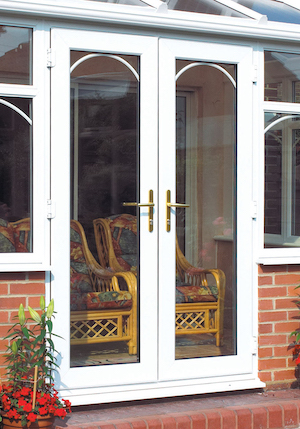
French Door Installation
Add a review FollowOverview
-
Founded Date March 8, 1999
-
Sectors Infrastructure Specialist
-
Posted Jobs 0
-
Viewed 6
Company Description
The 10 Most Scariest Things About French Door Replacement
French Door Replacement: A Comprehensive Guide
French doors are a popular choice among homeowners for their visual appeal and capability to boost natural light in a space. Nevertheless, like any home function, they may need replacement with time. Elements such as wear and tear, moving climate demands, and changes in personal design can lead to the need for new French doors. This short article offers a useful introduction of French Door Replacement (www.repairmywindowsanddoors.Co.uk), detailing when to replace them, the types offered, actions in the replacement procedure, possible costs, and often asked concerns.
When to Consider French Door Replacement
Replacing French doors might end up being essential for numerous factors, consisting of:
- Damage: Cracks, warping, and broken hardware can compromise performance and safety.
- Energy Efficiency: Outdated doors may not provide adequate insulation, resulting in increased energy costs.
- Visual Changes: Home renovations or modifications in personal taste can prompt the desire for brand-new doors.
- Performance Issues: Difficulty in opening or closing, or an absence of smooth operation might signify it’s time for replacement.
Signs Your French Doors Need Replacement:
- Water damage or rot in wood frames
- Draughts even when doors are closed
- Difficulty in locking or sticking doors
- Visible indications of wear such as peeling paint or rust
- Condensation between double-glazed panes
Kinds Of French Doors
When considering replacement, house owners have several choices offered:
-
Material Types:
- Wood: Classic, standard appearance with exceptional insulation but needs routine maintenance.
- Fiberglass: Durable and energy-efficient, simulating the appearance of wood without the maintenance.
- Vinyl: Low maintenance with energy-efficient homes, frequently readily available in numerous colors.
-
Designs:
- Swinging French Doors: Open inward or outward, perfect for large openings.
- Sliding French Doors: Convenient for smaller sized areas, efficiently slide open on a track.
- Multi-Panel French Doors: Feature several panels for an expansive view and modern-day appeal.
-
Glass Types:
- Single-pane: Basic and affordable but less energy-efficient.
- Double-pane: Improved insulation; recommended for energy preservation.
- Tempered Glass: Safety glass that resists damage.
Actions for Replacing French Doors
Changing French doors needs extensive planning and execution. Below is a step-by-step guide:
1. Determining the Door Frame
Precise measurements of the opening are vital to guarantee the brand-new doors fit correctly. Procedure the height and width of the frame and the density of the existing door.
2. Selecting the Replacement Doors
Pick the type of French door that matches your home’s design and your spending plan. Think about materials, designs, and hardware alternatives while making the selection.
3. Getting Rid Of the Old Doors
Thoroughly eliminate the existing doors and dismantle the hardware. Be mindful not to damage the frame during this process.
4. Preparing the Frame
Check the door frame for damage and make required repairs. Guarantee the frame is square and level, as this will affect the installation of the brand-new doors.
5. Setting Up the New Doors
- Location the New Doors: Set the new French doors in the frame, ensuring they fit snugly.
- Level and Secure: Use shims to level the doors. Protect the doors with screws, ensuring that hinges are properly aligned.
- Install Hardware: Attach handles, locks, and other hardware.
6. Finishing Touches
Seal around the edges with caulk to avoid drafts and enhance energy efficiency. If the doors are wooden, think about finishing or painting them.
7. Evaluating
Open and close the doors numerous times to guarantee smooth operation and correct alignment.
Expense of French Door Replacement
The cost of replacing French doors varies based upon materials, design, and labor. Below is a table summarizing the estimated costs connected with various types of French doors:
| Type of Door | Average Cost (Material Only) | Installation Cost Range | Total Estimated Cost |
|---|---|---|---|
| Wood | ₤ 400 – ₤ 2,000 | ₤ 200 – ₤ 500 | ₤ 600 – ₤ 2,500 |
| Fiberglass | ₤ 600 – ₤ 2,500 | ₤ 200 – ₤ 500 | ₤ 800 – ₤ 3,000 |
| Vinyl | ₤ 300 – ₤ 1,500 | ₤ 200 – ₤ 500 | ₤ 500 – ₤ 2,000 |
Keep in mind: Costs may differ based upon place, brand name, and specifics of the installation job.
FAQs About French Door Replacement
Q: How long does it take to replace French doors?A: The replacement
process generally takes a few hours to a day, depending upon the intricacy of the job and if additional repairs are required.
Q: Are French doors energy efficient?A: Modern French doors,
particularly those with double-pane glass and correct sealing, can be extremely energy effective. Q: Can I set up French doors myself?A: While DIY installation is possible for seasoned homeowners, hiring a professional is recommended to ensure a proper fit and surface, specifically if modifications to the frame are necessary. Q: What is the typical life-span of French doors?A: With correct maintenance, French doors can last anywhere from 15 to 30
years, depending upon the material and environmental conditions. French door replacement boosts a home’s functionality and appeal. By understanding when to replace them, what choices are offered, and how to go about the installation, house owners can make informed choices that include value and charm to their home. With appropriate care, brand-new French doors can provide years of service, convenience, and style.


